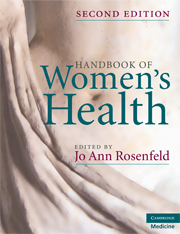Crossref Citations
This Book has been
cited by the following publications. This list is generated based on data provided by Crossref.
Kgosiemang, Bobby
and
Blitz, Julia
2018.
Emergency contraceptive knowledge, attitudes and practices among female students at the University of Botswana: A descriptive survey.
African Journal of Primary Health Care & Family Medicine,
Vol. 10,
Issue. 1,
Hammoud, Rima
Saleh, Sirine
Halawani, Doha
Mezher, Hayat
Abou El Naga, Azza
and
Azakir, Bilal
2020.
Knowledge and attitudes of Lebanese women of childbearing age towards emergency contraception.
The European Journal of Contraception & Reproductive Health Care,
Vol. 25,
Issue. 1,
p.
28.
Ahmed, Md. Sabbir
and
Yunus, Fakir Md
2021.
Factors associated with knowledge and use of the emergency contraceptive pill among ever-married women of reproductive age in Bangladesh: findings from a nationwide cross-sectional survey.
The European Journal of Contraception & Reproductive Health Care,
Vol. 26,
Issue. 3,
p.
195.
Rahman, Md Mahabubur
Ferdous, Zannatul
Ara, Tasnim
Mahi, Mahfuza
and
Haider, M Moinuddin
2023.
Role of community-level emergency contraceptive pills awareness and possibilities of long-acting reversible or permanent methods in reducing unwanted births in Bangladesh: evidence from a nationwide cross-sectional survey.
BMJ Open,
Vol. 13,
Issue. 9,
p.
e066477.
Tiwari, Swasti
Prasad, Roshan
Wanjari, Mayur B
and
Sharma, Ranjana
2023.
Understanding the Impact of Menopause on Women With Schizophrenia-Spectrum Disorders: A Comprehensive Review.
Cureus,



